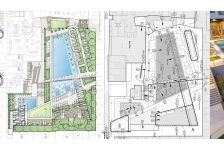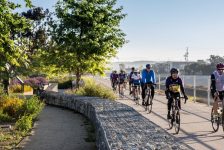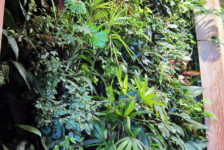Studying landscape architecture is hard. The old adage of ‘work smart, not hard’ is very enticing. Whilst there’s no escaping hard work on a landscape architecture course, you can make sure you’re working smart! Here we take a look at the five most common habits of successful landscape architecture students. 5. Bouncing off your classmate At the beginning of our undergraduate course one of our lecturers shared this pearl of wisdom with our class “you are each other’s greatest resource”. The most successful students know who has experience working in construction or whose plant knowledge is particularly good. Rather than spend ages searching the internet for answers these successful students ask the right person, who usually knows the answer and can point to a useful text.
4. Napping Naps have the ability to consolidate learning, improve memory, increase alertness and creativity and reduce levels of stress hormones. It can be tempting to spend as much time as possible in the studio, but successful students often take time to take short naps, and reap the benefits in their learning and work. 3. Goal setting and scheduling “Most people spend more time planning their summer vacation than they do their lives” – John Assaraf – entrepreneur, business coach and author. The truth is 10 minutes a day of goal setting and scheduling can save you hours, days and possibly weeks, freeing you up to revise your projects and turn that C grade into an A grade. Before you start your day, plan it! A great piece of FREE online software to help you plan your day can be found at Simpleology 2. Study/life balance Being a landscape architecture student is hard work, and can be demanding. The most successful students recognize this and take time to look after themselves. It can be tempting to eat sugary foods for an energy rush and drink lots of coffee. Successful students will make time to exercise, eat well and socialize. The path to becoming a landscape architect is more of a marathon than a sprint Pacing yourself and giving yourself good ‘fuel’ is essential. 1. Jotting down ideas and capturing inspiration It seems simple, but it is one of the most useful things any student can do. The most successful students always have a pocket sized notebook with them, and make annotated sketches in class and outside to record information, explore ideas and work out problems. Always have your pocket sized sketch pad at the ready. Photo credit: jurie/shutterstock Through observing the habits of successful students, and implementing them in your own work, you can overcome your weaknesses and maximize on your strengths. Make a New Year’s resolution to adopt some habits from successful students to improve your own learning. Whether it’s just getting into the habit of daily planning, or always carrying a sketchbook into class, you’ll be glad you did! Article written by Ashley Penn. Feature image: bikeriderlondon/ shutterstock
Published in Blog
Always have your pocket sized sketch pad at the ready. Photo credit: jurie/shutterstock Through observing the habits of successful students, and implementing them in your own work, you can overcome your weaknesses and maximize on your strengths. Make a New Year’s resolution to adopt some habits from successful students to improve your own learning. Whether it’s just getting into the habit of daily planning, or always carrying a sketchbook into class, you’ll be glad you did! Article written by Ashley Penn. Feature image: bikeriderlondon/ shutterstock
Published in Blog








